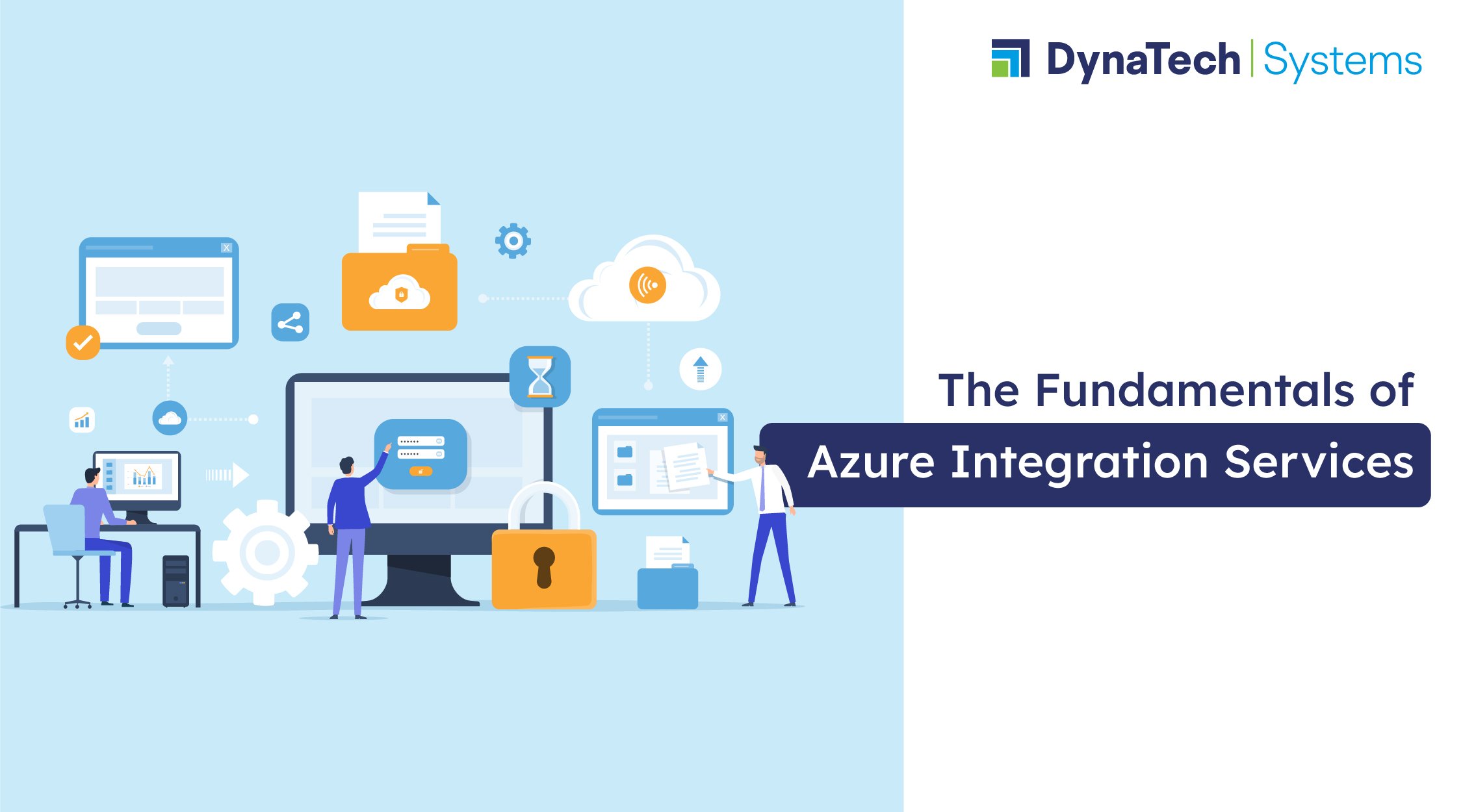Microsoft Azure is a cloud computing platform that offers a vast range of services to guide organizations build, deploy, and manage their applications and data competently, on the cloud server.
One of the core services that Microsoft Azure provides is – Integration. In simple terms, it is the Azure cloud-based iPaaS (integration platform as a service) from Microsoft. Mission-critical integrations can be processed with the Azure Integration. When the Integration are in place, it puts forward serverless computing practice that drives efficiency and uniformity while connecting the applications for business operations.
Microsoft Azure Integration services are quite budget-friendly, agile and robust when it comes to the iPaaS market. Since the Azure iPaaS is hosted and integrated on the cloud server, it certainly empowers businesses to connect a number of varied software with the latest tools, either on-prem or cloud.
Why is iPaaS preferred?
To get rid of these hurdles, many organizations are adopting iPaaS (Integration Platform as a Service) solutions. IPaaS, like Azure Integration, is a cloud-empowered platform that facilitates the integration of multiple systems and apps.
Understanding Azure Integration
Azure Integration provides a flexible platform where users can choose specific capabilities required by their software, as the services are modular. Businesses are only charged for usage, meaning they won’t incur any cost if the integrations are not utilized. The Azure iPaaS offers comprehensive features for developing, deploying, and managing enterprise-level integrations.
To streamline the efforts of developers, Azure Integration offers API Management, Logic Apps, Service Bus, and Event Grid. It is important to understand the capabilities of each tool and choose the most appropriate one for the scenario. Just as one wouldn’t use a screwdriver to make a hole in a wall, selecting the correct integration component that meets specific business needs is crucial. The system should be capable of automatic deployment and release to Azure, utilizing Azure DevOps release pipelines and Azure Resource Manager Templates automation.
It is essential to build a robust and reusable platform that integrates key components to avoid designing solutions from scratch each time. APIs, Enterprise Messaging, Workflows and Orchestration, and Events are all such components.
Let’s understand in detail about each of these solutions:
1. Microsoft Azure API Management
Microsoft Azure provides a secure ecosystem for businesses to publish their APIs and connect them to back-end systems located globally. It provides superior reach and profound customer engagement. With Azure API Management, companies can easily launch an API program by seamlessly connecting their back-end system to the platform. Its benefits are as follows:
Fascinates developers
Microsoft Azure API Management streamlines the API publishing process, making it appealing to developers and encouraging them to explore new business prospects. Proper utilization of API management allows developers to access APIs and create innovative applications.
Adjustable with any scale, API, and host
Microsoft Azure API Management is designed to work with any scale, API, and host. It’s flexible and adaptable as it caters to varied types and scales of businesses and industries.
Initiates secure and optimized APIs
Advanced security features such as authentication and authorization are in-built into Azure API Management which enables businesses to initiate secure and optimized APIs.
360-degree view & insights into API performance
Providing detailed analytics and reports on API usage, performance, and other metrics is the core ability of Azure API Management. By considering the outcomes, organizations are able to optimize their APIs and gain insights into customer preferences and behavior.
2. Microsoft Azure Service Bus
Microsoft Azure offers a scalable and reliable enterprise messaging solution identified as Azure Service Bus. This solution supports the exchange of data among multiple services and apps through messages in binary. XML, text, and JSON formats. The benefits are as follows:
Streamlines cloud messaging
Microsoft Azure Service Bus simplifies the procedure of building messaging applications that enables businesses to seamlessly integrate cloud-based services with on-premises applications. Since the integration is in place, sharing of data among multiple systems becomes easier.
Scalable and robust cloud solutions
Microsoft Azure Service Bus is highly scalable and robust when it comes to building a cloud-computing solution. Its ability to manage high-volume messages ensures that they are delivered securely with end-to-end encryption.
Complex message routing
For enhanced security and reliability, Azure Service Bus allows businesses to build complex enterprise messaging platforms. Several messaging features such as publish/subscribe, request/response, and one-way messaging are supported.
3. Microsoft Azure Event Grid
Microsoft Azure Event Grid can trigger specific actions when a particular event occurs. For example, in a Document Management System, instead of constantly checking for new messages in an outbound queue, a trigger can be added to an Event Grid that will execute a specific action, like running an Azure Function or a Logic App. This makes the process of building messaging applications simpler and more efficient. Its benefits are as follows:
Cost-Effective, Event-Driven Architecture
Microsoft Azure Event Grid enables the creation of an event-driven architecture, which is more efficient and cost-effective than traditional polling-based approaches. With Event Grid, the service only runs when it is triggered by an event, resulting in significant cost savings.
Reactive Programming
Developers can create responsive and efficient apps using reactive programming through efficient utilization of Azure Event Grid. This allows the apps to quickly respond to changes and events, resulting in reduced response times.
Focus on Product Innovation
Developers can focus on product innovation by leveraging the simplified event-driven architecture and reduced complexity of integrations with other apps or services offered by Azure.
4. Microsoft Azure Logic App
Logic Apps is a cloud-based service on Azure that simplifies the integration between on-premises and cloud systems through Microsoft-managed connectors and pre-built APIs. Users can automate, schedule, and orchestrate workflows, tasks, and processes for integration purposes. When triggered, the logic app executes the required action such as data conversion or flow control. Users can leverage its no-code capabilities and create functions using Azure DevOps visual design tool. Additionally, Microsoft offers pre-built connectors and template galleries to further simplify the integration process. Its benefits are as follows:
Easy integration
With the range of out-of-the-box connectors to its aid, it is quite easy to connect and integrate different systems and services with Azure Logic Apps.
Cloud-based messaging
Connect and exchange data among multiple businesses with the variety of messaging protocols of Microsoft Azure Logic Apps.
Hybrid integration
Microsoft Logic Apps allow for the integration and connection of data from cloud-based systems to on-premises deployments, making it easy to work with data that is stored across diverse locations.
Straightforward workflow design
Web-based workflow designer is a powerful tool by Azure Logic Apps. With its utilization, organizations can directly design, implement, as well as manage workflows without any coding knowledge.
5. Azure Monitor
Azure Monitor is an extensive monitoring solution to collect, analyze, and respond to telemetry from your on-premises and cloud environments. Accelerate the performance of your apps and services with Azure Monitor. Its benefits are as follows:
Simplified Monitoring
It needs little or no technical effort or investment to begin with. It just needs a simple authorization process to activate the monitoring. It enables IT professionals and Azure admins to collect and process data in a central dashboard.
Efficient Infrastructure Visibility
Azure monitoring renders more data and insights into the performances, issues, and processes of any organization. It showcases graphs and visual charts to specifically inspect and calculate performance against KPI’s.
Instant Alerts
Azure monitoring enables enterprises to get instant notifications and alerts in production and performance challenges. Azure admins can get notifications via SMS, emails, and monitoring dashboards enabling them to take immediate actions.
Automatic Resolution
Azure administrator can automate the resolution of optimization and performance issues by using these automatic features in Azure monitor. It implements automatic solution processes for any challenges by configuring management and recovery procedures.
6. Azure DevOps
Azure DevOps is a SaaS platform that renders various Azure tools and services for the complete software life cycle. It’s not only limited to internal tools but can also be integrated with popular open-source tools and services along with DevOps workflow. Its benefits are as follows:
Flexibility
Azure DevOps is extremely flexible and hence, each of its services can be used independently. Also, it can be easily integrated with the in-house technologies of the organization; thus, promoting seamless adaptation.
Platform Independent
Although, Azure is the product of Microsoft, Azure DevOps not only focuses on the languages and platforms built by Microsoft but also on various other platforms. It can be created to run on any type of operating system including Windows, MacOS, and Linux, as well as other languages like Java, PHP, Python, C, .Net, iOS, Node JS, and C++.
Cloud Independent
Azure DevOps also supports AWS (Amazon Web Services) and GCP (Google Cloud Platform) with its continuous integration and delivery model. Azure DevOps is cloud independent and supports various platforms.
7. Azure CI/CD
Continuous Integration & Continuous Delivery is a software development method where all the coders and developers work simultaneously on a shared repository of code. As and when any modifications are done, code issues can be detected through automated build process. This results in quicker development life cycle and reduced rate of error. Its benefits are as follows:
Real-time Notifications
It enables you to get real-time notifications if any code is modified or changed. By default, this feature is enabled, and you can disable it whenever you want. You can also set preferences of which event notifications you want.
Decreased Human Error
This is one of the signification benefits of CI/CD automation as it decreases the probability of human error. Also, it’s necessary to verify the accuracy of data and remove errors.
Automatic Testing
Testing process can be cumbersome and time consuming. Automatic testing process can help in quickly finding and rectifying bugs.
Reduce Downtime
Unexpected outages can be avoided with Azure CI/CD. Pre-planned maintenance schedule can help in reducing downtime and ensuring stability so the system can work smoothly and efficiently.
Conclusion
Enterprises that are looking forward to connecting with partners, establishing new connections, and discovering a new realm of opportunities can certainly take advantage of Microsoft Integration Services. Since the Microsoft Integration Services are iPaaS, it could be comprehended that it aligns with all varieties of software. Moreover, enterprises can reap maximum benefits by integrating other tools like SAP and Salesforce.
As a Microsoft Solutions Partner with extensive experience in integration, our experts can deliver end-to-end consultation, development, and support to help businesses successfully connect with Azure. Connect with us at sales@dynatechconsultancy.com.




























